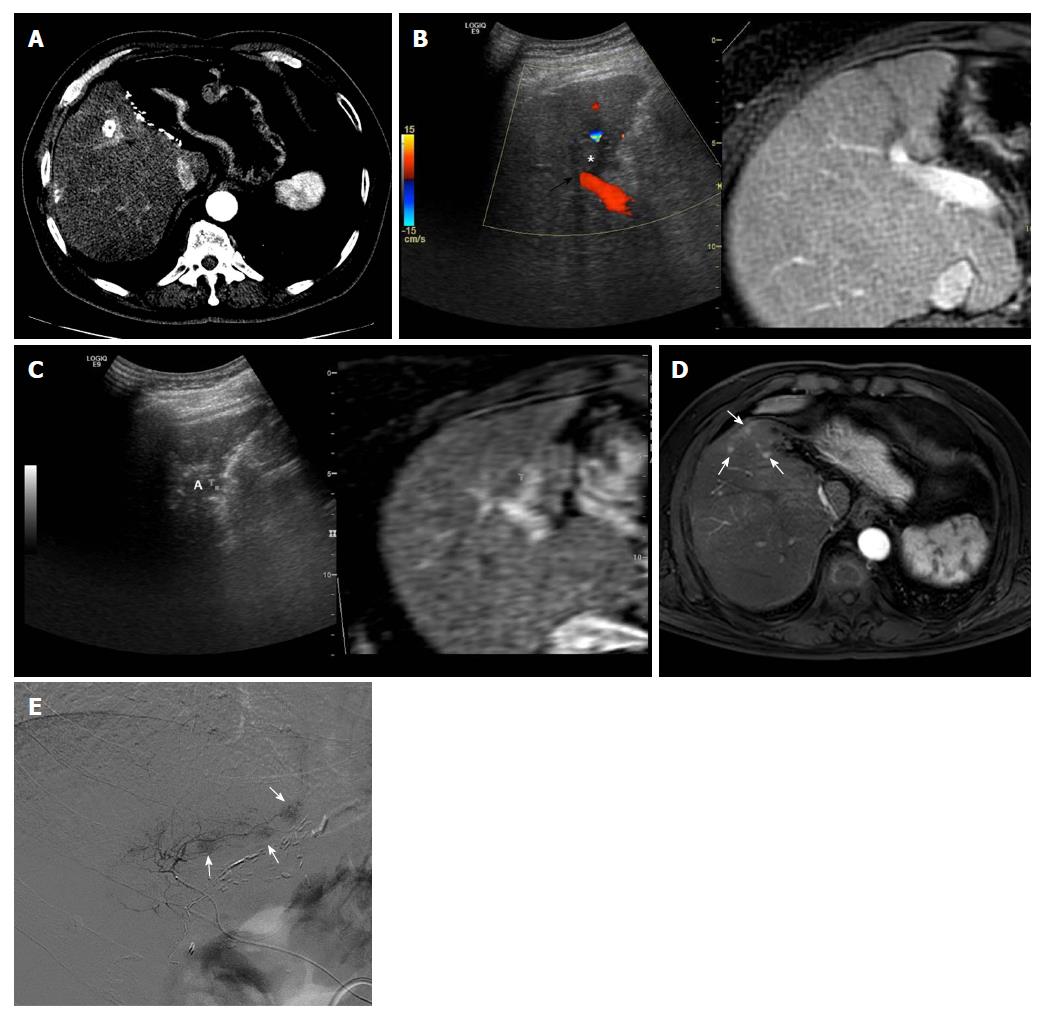Copyright
©The Author(s) 2018.
World J Gastroenterol. Dec 21, 2018; 24(47): 5331-5337
Published online Dec 21, 2018. doi: 10.3748/wjg.v24.i47.5331
Published online Dec 21, 2018. doi: 10.3748/wjg.v24.i47.5331
Figure 1 Images demonstrating aggressive intrasegmental recurrence after radiofrequency ablation for perivascular hepatocellular carcinoma.
A: Axial computed tomography image obtained during hepatic arterial phase shows viable hepatocellular carcinoma (HCC) within the partially lipiodolized nodule (asterisk) in segment V before radiofrequency (RF) ablation. The index tumor is in contact with the right portal vein (black arrow); B: On planning ultrasonography (US), using fusion imaging with color Doppler US and magnetic resonance imaging (MRI), the low echogenic incident tumor (asterisk) is in contact with a right portal vein (black arrow); C: During RF ablation with the US fusion system, the ablation zone (A) is covered with viable enhancing tumor foci, indicating T marker on real time US/fused MR image; D: MRI scan obtained during the hepatic arterial phase 9 mo after RF ablation shows multiple small arterial enhancing nodules (white arrows) of consistent size, representing recurrent tumors. These recurrent tumors developed simultaneously in a peripheral area of the treated segment, fed by the previous peritumoral portal vein; E: The patient underwent transarterial chemoembolization for tumor control considering tumor multiplicity. Multiple small nodular tumors were detected along the portal tract on hepatic angiogram.
- Citation: Kang TW, Lim HK, Cha DI. Percutaneous ablation for perivascular hepatocellular carcinoma: Refining the current status based on emerging evidence and future perspectives. World J Gastroenterol 2018; 24(47): 5331-5337
- URL: https://www.wjgnet.com/1007-9327/full/v24/i47/5331.htm
- DOI: https://dx.doi.org/10.3748/wjg.v24.i47.5331









